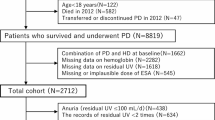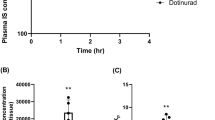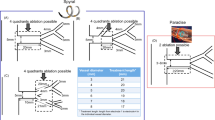Abstract
DIODONE (3,5-di-iodo-4-pyridone-N-acetic acid), shown by Elsom et al. 1, Landis et al. 2, and Smith et al. 3 to be an effective agent for the estimation of renal plasma flow and tubular function, has been used extensively in physiological studies. In 1945, Smith et al. 4 showed that p-aminohippuric acid was in some ways superior to diodone for these estimations in man because the urine and plasma blanks are small, and because diodone penetrates human red blood cells whereas p-aminohippuric acid does not. The red cells of dogs are permeable to both reagents.
This is a preview of subscription content, access via your institution
Access options
Subscribe to this journal
Receive 51 print issues and online access
$199.00 per year
only $3.90 per issue
Buy this article
- Purchase on SpringerLink
- Instant access to full article PDF
Prices may be subject to local taxes which are calculated during checkout
Similar content being viewed by others
References
Elsom, K. A., Bott, P. A., and Shiels, E. H., Amer. J. Physiol., 115, 548 (1936).
Landis, E. M., Elsom, K. A., Bott, P. A., and Shiels, E. H., J. Clin. Invest., 15, 397 (1936).
Smith, H. W., Goldring, W., and Chasis, H., J. Clin. Invest., 17, 263 (1938).
Smith, H. W., Finkelstein, N., Aliminosa, L., Crawford, B., and Graber, M., J. Clin. Invest., 24, 388 (1945).
Lewin, K., Z. Klin. Med., 42, 371 (1901).
Alpert, L. K., Bull. Johns Hopkins Hosp., 68, 522 (1941).
Author information
Authors and Affiliations
Rights and permissions
About this article
Cite this article
POTTER, B. Use of Diodone in Renal Studies in Sheep. Nature 187, 698 (1960). https://doi.org/10.1038/187698a0
Issue date:
DOI: https://doi.org/10.1038/187698a0



